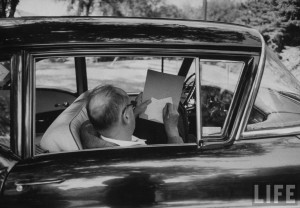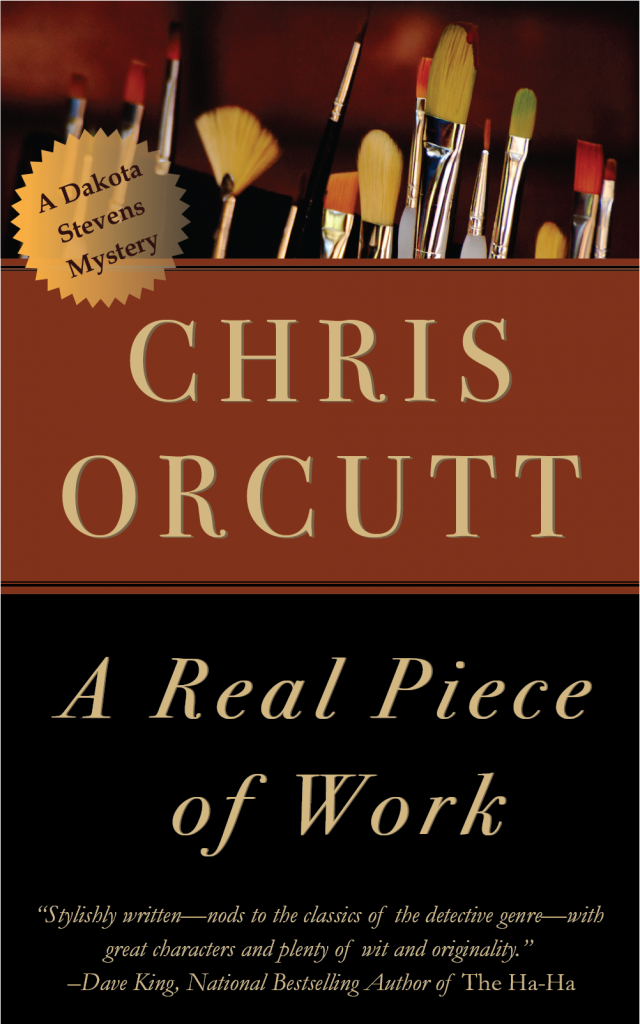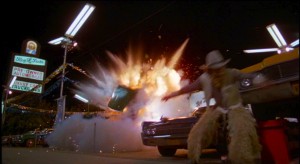Why I’m Publishing My P.I. Series on Kindle
The short answer is this: A writer writes to be read, and the two P.I. novels I wrote that were sitting on my hard drive weren’t being read by anyone. I wanted people to read them, to be entertained by them.
That’s why I wrote them, and that’s why, after running them through the gauntlet of traditional publishing, I finally decided to put them on Kindle. The first one, A Real Piece of Work, is available now.
Okay, that’s the short answer. Now, for those of you who are interested in one writer’s trials and travails, here’s the long answer:
* * *
Six years ago, when I began writing the Dakota Stevens series, the only form I could imagine the books taking was, well, books—words printed on paper, bound in hard covers, sold on Amazon and at my local independent bookstore. If someone had told me then that many readers (and more all the time) would be reading on their computers and digital tablets—actually reading, not just skimming emails—I would have said, “Sure, and someday soon Apple stock will be worth over $400 a share. Lotsa luck.”
As it turns out, I was wrong on both counts.
“No man but a blockhead ever wrote, except for money,” said Samuel Johnson, but in my case, as much as I may have fantasized about Big Money from my writing, ultimately I did it because I loved the writing itself.
I also loved the private detective genre—detectives including Sherlock Holmes, Raymond Chandler’s Marlowe, and Robert Parker’s Spenser—and I wanted to see if I could create a modern detective of my own who could be as real to readers as those other detectives were to me. I wanted to entertain people, engross them. I wanted to give readers vivid, unique scenes. I wanted to give them a woman who, as a beautiful and brilliant chess grandmaster, was unlike any other “Watson” written. And I wanted to give them a detective with FBI experience in the field and the lab, who solved crimes with shoe leather and science.
I have to admit, though, that my choosing to write in the P.I./mystery genre was partly motivated by a false idea I had about the marketplace from reading too many books by “industry experts.” The common wisdom goes like this: Since there is a greater demand for books in the mystery genre, getting a mystery published is an ideal way for new writers to break in and get their other work published. This, I have learned, is mostly bullshit—a pipe dream sold by a few editors and agents who earn a tidy second income writing these books and conducting seminars selling false hope. They don’t want the illusion shattered because then their “How to Get Published in 10 Easy Steps” books and systems are doomed.
What these experts neglect to mention is that because so many writers believe the above “rule,” the mystery market is perpetually glutted with manuscripts, making it that much tougher for yours to stand out. Also, for this reason the dedicated and good-intentioned agents and editors (the majority) are understandably jaded, so that if your mysteries are intricate and well-written but violate the established formula in any way, they will reflexively reject it.
Time and again, both when I submitted to agents and when my agent did to editors, the feedback about my Dakota novels was positive: the quality of the writing, the dialogue, the plots, the scenes, something—but…there was always a “but.” And the maddening thing was, the “buts” always contradicted each other. This agent loved Dakota, but found Svetlana hard to believe. This editor loved Svetlana, but felt she overshadowed Dakota. Or, the market was already “too crowded,” conjuring images for me of swanky soirées with elegant women in strapless gowns, but soirées I couldn’t attend because—that’s right—they were too crowded.
To their credit, most of the agents or editors tried to soften their rejections, assuring me that all good writing eventually finds a home, or, as another one said, “The cream always rises to the top.” This might be true, but not if every agent or editor believes it and uses this belief as a justification for passing on good work. Sometimes I wonder how that particular agent’s career is going; has that agent risen like the cream or stayed at the bottom like the what—curds?
Several times—too many times—the Dakota novels came this close to acceptance by a mainstream, name publisher, and once even by a movie studio, who deserves the award for Most Bizarre Rejection of a Literary Property Ever. To this day, I have no idea how one of WB’s production companies heard about me or A Real Piece of Work, but they contacted my then-agent and requested it.
For two weeks, maybe a month, we were on edge. I wondered if this might be the life-changing moment I’d dreamed of. I imagined being on the set, schmoozing with the actors playing Dakota and Svetlana. I imagined a director’s chair with my name and title (Creator) on it. I imagined a lot of nonsense, including whether or not a life in Hollywood was good for a guy like me, a guy with pretty severe bipolar. What if I got into coke? Then again, what if I got to play golf with my idol, Clint Eastwood? What if a lot of things?
Finally, on a cold November night, as my wife and I shivered in our hovel of an apartment, my agent called. In her defense, she was new to her work, so I think making this kind of call was difficult for her; but she was excited when I got on the line, which I interpreted as good news. It wasn’t. Ultimately the producer had read the book and thought it was great. “But,” this person added, “it doesn’t have enough explosions.”
“What?” I said.
“That,” my agent said, “and that it didn’t feel big enough to them. They didn’t see it as a big-budget story. They want a property for an 80 or 100 million-dollar picture. If there were more explosions, they might take it.”
Never mind that I was disturbed that my wholesome Midwest agent was suddenly talking fast like a wheeler-dealer on “the Coast,” slinging out words like “property.” This whole explosions thing and the idea that my novels somehow weren’t big enough made me feel like the artist in Woody Allen’s Hannah and Her Sisters, when a rock star shows up at the artist’s studio looking for some art for his new house. The artist shows him a few paintings and the rock star says, “Yeah, that’s great, but…I’m looking for something big. You know, BIG. (Spreads his arms.) You got anything like that?”
The artist curmudgeonly replies, “I do not sell my art by the yard.”
That’s how I felt. But more than that I was mystified by the producer’s remarks. More explosions? I thought about my novel. Had I written a scene I’d forgotten about?
Nope.
Number of actual explosions in the novel: zero.
Number of opportunities for explosions (i.e., flammable materials lying around, like paint thinner): maybe 2.
She never said so, but my agent clearly had wanted me to revise the book and “throw in” a few explosions. I said if they bought the rights to the book, they could cram as many blow-ups as they wanted into the screenplay, but I wasn’t rewriting a novel that had taken me 3 years to write, adding stuff I didn’t believe in, only to have them potentially say “nah” to the final product.
After that, my agent and I drifted apart. She submitted the second book in the series, The Rich Are Different, and while certain editors expressed interest, again there was always equivocation and qualification attached. As for my agent, I’m not convinced she fought especially hard for the book; by then she seemed focused on nonfiction—fiction forever being a tough sell.
For months afterward, I was bitter, staring at the door that had slammed in my face instead of waiting for the next door to open. I couldn’t understand why, after writing what I knew were very good novels for the genre, I wouldn’t have an opportunity to see them published. It felt like I had wasted years of my life on these books, and all I wanted to do was forget. I was so angry about the time wasted that when I got an email from Amazon about Kindle Direct Publishing (KDP), I immediately junked it and spent the next year writing a memoir aptly titled Revenge Fantasies.
It’s at this point in the story that I would have turned to drink. I would have gone back to my old friends: Mademoiselle Beaujolais, Monsieur Pouilly Fuisse, Mr. Sam Adams, Mr. Bushmill, and, finances depending, 18-year-old Mr. Macallan. Would have, that is, if I didn’t totally turn into Mr. Hyde when I drink. I’m glad I stayed away from it.
Instead of drowning my sorrows, for the past 3 years I’ve been focused on becoming the best writer I can, and to hell with genres and the market. Specifically I’ve been writing a lot of short fiction and humor, and targeting the top periodicals for publication. It’s been a steep climb, but I’m making progress and I’ve been enjoying myself while doing it—making it about the writing, and letting the marketplace do whatever it wanted to do.
About three times a year, though, new ads for KDP piqued my interest, including the one where they announced a 70% royalty for writers. Seventy percent! Still, I refused to bite. I was bitter about the entire world of publishing and saw going to Kindle as a copout, a purgatory for writers not good enough to be published on paper, by a publishing house.

You have to understand, even though I grew up with technology, when it comes to writing I’m old-school. I write my first drafts in pencil or on one of my 5 typewriters (this entry began on a legal pad). My first job out of college was as a newspaper reporter. Ink on paper. Seeing your name in print every morning or once a week. And getting paid for your skill. Also, I had grown up with books, seen my grandfather read The New Yorker and The Atlantic every morning for 22 years, and I wanted to be in print. All of my idols were: Chekhov, Tolstoy, Fitzgerald, Hemingway, Chandler, Nabokov, Fleming, Cheever, Carver, Keillor, and Boyle. They all got their start in books, not on screens designed to resemble paper.
But I also know the stories of those writers’ beginnings, and with several of them, had Kindle been an option at the time, I’m confident they would have done it. Chekhov wrote largely for newspapers in his youth—anything that paid while he was going to medical school and working as a young doctor. He would have jumped at the 70% royalty. Hemingway was a shameless self-promoter who had several years in Paris when no American periodicals would publish his stuff. He would have gone with Kindle. Chandler didn’t publish his first novel, The Big Sleep, until he was 49. Had Kindle been available to him, he might have taken it. Cheever had several run-ins with The New Yorker over money; who knows, maybe he would have jumped ship to the new technology as well. And Carver? Raymond Carver and his wife Maryann were destitute and desperate so many times early in their marriage that they surely would have published his work on Kindle, if only to keep the heat on.
But none of that matters. None of those writers wrote for the money; they wrote because they had to and they wanted to be read. Same deal here. If no one is reading your words, writing is just another word for solipsism.
I’d be honored if you bought and read my PI novel. It’s well-researched, well-written, and, well, a good read. And when sales of this first one reach 1,000 copies, I’ll release the second book in the series. But I want you to know that I didn’t do it for the money. I did it to entertain you, the reader, and because I love the process.
At the top you’ll find a link to a page where you can learn more about A Real Piece of Work, including its plot and the copious research behind it.



Pingback: A Shattered Paradigm – Chris Orcutt, Writer